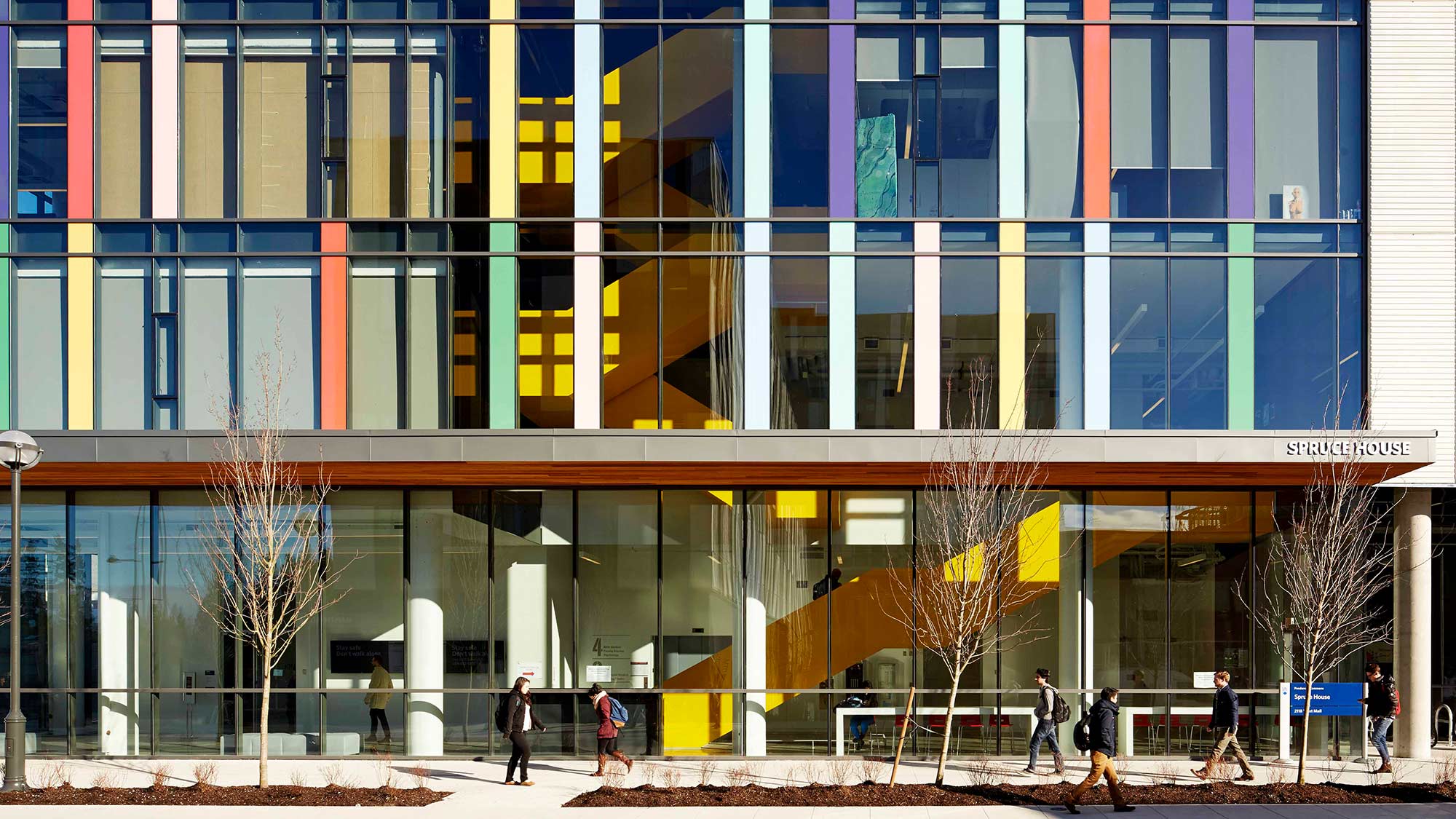The Department of Art History, Visual Art and Theory is housed in six buildings on campus: the Audain Art Centre, Auditorium Annex A, B.C. Binning Studios, Dorothy Somerset Studios, Frederic Lasserre Building, and the Old Fire Hall.
A range of custom facilities, equipment, and resources are available for AHVA students and faculty to develop their research and practice. All community members gather for research presentations and celebrations at the Frederic Lasserre Building and Audain Art Centre.
All our facilities can be accessed by appointment. To make an appointment, click on the facility you are interested in below. For general inquiries please contact individual area technicians.
AHVA Facilities
AHVA Gallery
Photography at BC Binning Studios
Print Media Research Centre
Studio Spaces
Visual Resources Centre
Workshop
Other Resources
The library aims to create and cultivate a vital collection that supports the research needs of both faculty and students. The library provides research support services for the Department of Art History, Visual Art and Theory; the School of Music; the School of Community and Regional Planning; the School of Architecture and Landscape Architecture, and the general public.
Located on the third and fourth floors of the Irving K. Barber Learning Centre, the art, architecture, and planning portion of the collection numbers more than 200,000 items, including over 250 current art journal subscriptions and monographic serials (in print and online). The online collection includes full-text articles published in art journals worldwide and essential databases indexing journal articles. Staff members at the library help build collections to support research and offer reference services in-person, through email, by phone, or by appointment.
Throughout the year, the gallery hosts a number of exhibitions that promote understanding and discussion of contemporary art and contemporary issues in art history, criticism, and curating. Exhibitions are generated internally or borrowed and draw on work from local, national, and international artists, other Canadian art institutions, art organizations, and international sources.
The gallery attempts to expose the broadest possible spectrum of visual concerns to both the University community and the public. It also sponsors visiting speakers as well as occasional symposia.
UBC's Museum of Anthropology (MOA), designed by Arthur Erickson and opened in 1976, is situated on the Point Grey cliffs overlooking Howe Sound and the North Shore mountains. Both its setting and architecture are inspired by Coastal First Nations settlements of British Columbia.
The collections include the famous Northwest Coast First Nations collection, the Walter and Marianne Koerner Collection, an international textile collection, and archaeological findings of British Columbia and the North Pacific Rim. MOA houses nearly 50,000 works from almost every part of the world, while the Laboratory of Archaeology houses an additional 535,000 archaeological objects in the building.
Open to the public; the UBC Arts and Culture District offers theatre, film, contemporary and fine art, music, opera, live performances, and the world-renowned Museum of Anthropology.
Policies, Forms and Guidelines
Students taking classes at AHVA have access to several unique studio facilities and working spaces and interact with our specialized faculty and staff. To access these spaces and ensure everyone's safety, students need to fill out agreement forms before accessing AHVA facilities and review the handbook to book spaces and follow general guidelines.
VISA Handbook
This handbook explains eligibility criteria and access procedures for our studios and facilities, provides contact information for area staff, and outlines art-making guidelines. It also offers information on health and safety, emergency contacts, as well as other AHVA and UBC resources.
Students at AHVA studios and facilities are required to follow health, safety and security guidelines, including following the usage of approved equipment and materials. Students must also comply with AHVA’s regulations for artwork installation and display in a public space and disposal of rubbish and materials.
